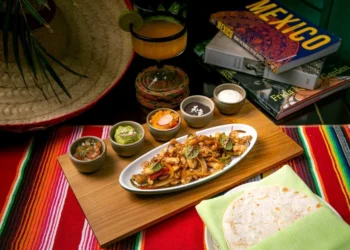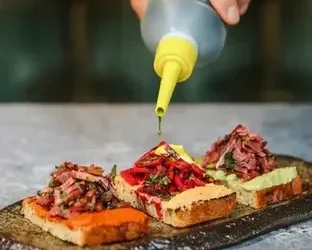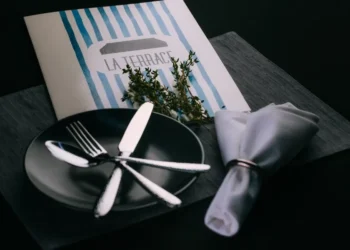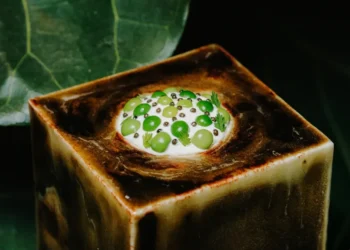WHAT INITIALLY INSPIRED YOU TO PURSUE A CAREER IN CULINARY ARTS, AND HOW DID YOUR PASSION FOR SICILIAN CUISINE DEVELOP OVER THE YEARS?
First of all, being Sicilian and loving food. At thirteen, I started working in a bar-pastry shop- cafeteria in Vittoria called Sweet. And between the ages of sixteen and eighteen, I gained experience in savory cuisine. At that moment, I knew what I wanted to do with my life. Cooking would be my way of expressing myself, studying and working, working and studying.
HOW DO YOU SUCCESSFULLY PRESERVE TRADITIONAL SICILIAN RECIPES WHILE INCORPORATING MODERN TECHNIQUES AND INGREDIENTS TO KEEP THE CUISINE RELEVANT AND INNOVATIVE?
By continuing to innovate, reviving the long roots that come from the past. It’s easier that way than inventing something from scratch. Italy and Sicily have a past and a variety of microclimates that are unique in the world. Today, thanks to technology, this heritage can be revisited without spatial or temporal limits. Just think about the fact that we use wheat in every possible way, from bread to pasta. Ergo: those who have no history have little to innovate.
WHICH SPECIFIC LOCAL INGREDIENTS FROM SICILY DO YOU CONSIDER ESSENTIAL IN YOUR COOKING, AND HOW DO THEY REFLECT THE ISLAND’S UNIQUE CULTURAL AND NATURAL HERITAGE?
Sicily, as I often say, is a food and wine continent, from seasonal vegetables to seasonal fish, condiments and fruits, from oregano to wild fennel, extra virgin olive oil, capers, black olives and green olives to accompany bread. Not to mention the wines, milk and cheeses from sheep and cows.
CAN YOU SHARE A DEFINING MOMENT OR EXPERIENCE EARLY IN YOUR CAREER THAT SIGNIFICANTLY INFLUENCED YOUR APPROACH TO FOOD AND YOUR DEVELOPMENT AS A CHEF?
There are two key moments. In 2002, when Il Gambero Rosso named me best young chef, and in 2004, the year I received my first Michelin star.
WHAT ADVICE WOULD YOU OFFER TO YOUNG AND NOVICE CHEFS?
First, they must become chefs, work their way up the ladder, and only then, when they have mastered their craft, the space around them and the economy, can they say they have learned a feasible trade.
HOW DO YOU BALANCE RESPECTING AGE-OLD RECIPES WITH ADAPTING THEM FOR CONTEMPORARY PALATES AND CULINARY?
I strive for the utmost aesthetic rigor, paying meticulous attention to cooking times and the cutting of raw ingredients, placing importance on textures. In this way, I translate the past into the present and for the future.
CAN YOU DESCRIBE A RECENT DISH OR PROJECT THAT EXEMPLIFIES THE HARMONY BETWEEN TRADITION AND INNOVATION IN YOUR KITCHEN, AND WHAT STORYTELLING OR CULTURAL ELEMENTS IT REFLECTS?
I would suggest spaghetti with mussels and moray eel, also known as Spaghetti Mon Amour. A charming and inviting dish, scented with saffron and wild fennel, reflecting both Arabic and Norman influences.
WHAT ROLE DO YOU BELIEVE CULINARY ART PLAYS IN PROMOTING SICILIAN CULTURE GLOBALLY?
We have always been committed to getting people to read about us, eat at our restaurant, buy our products and remember us, showcasing the authenticity of our cuisine in the dining room, in the media and on social platforms. Eighty per cent of our guests are from abroad, from America to Russia to China, from Cape Town to Copenhagen.



































